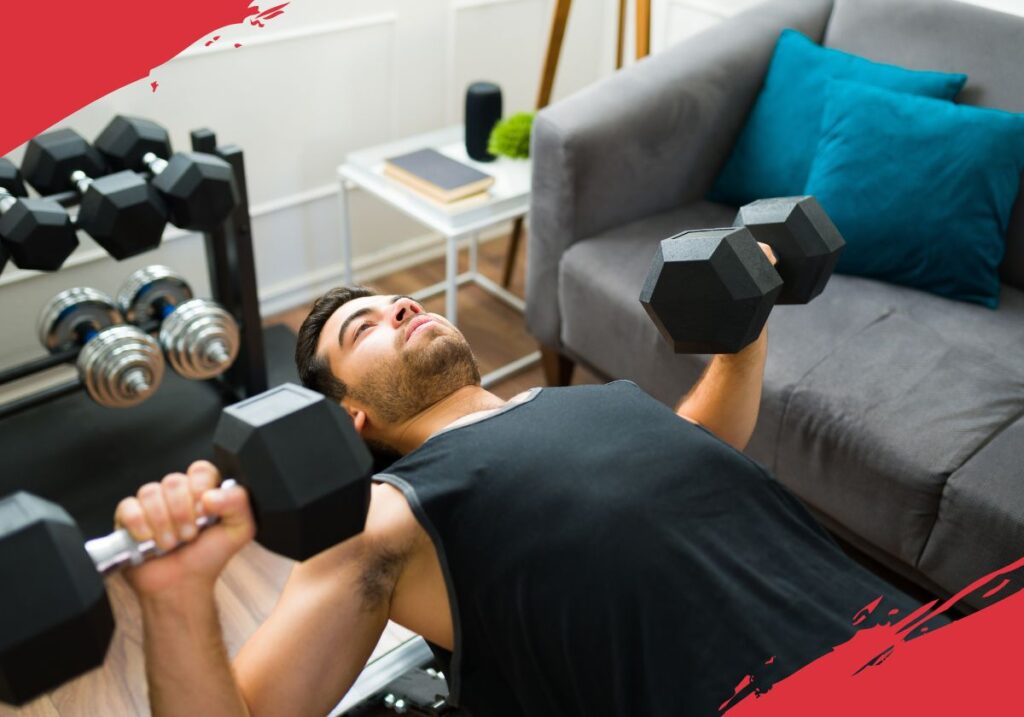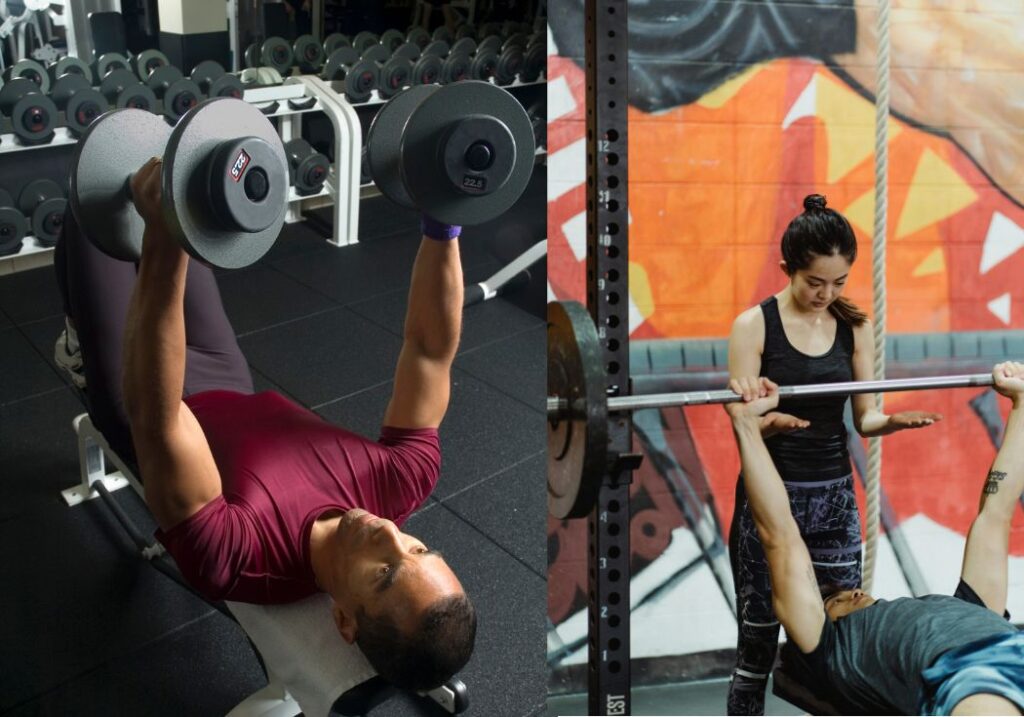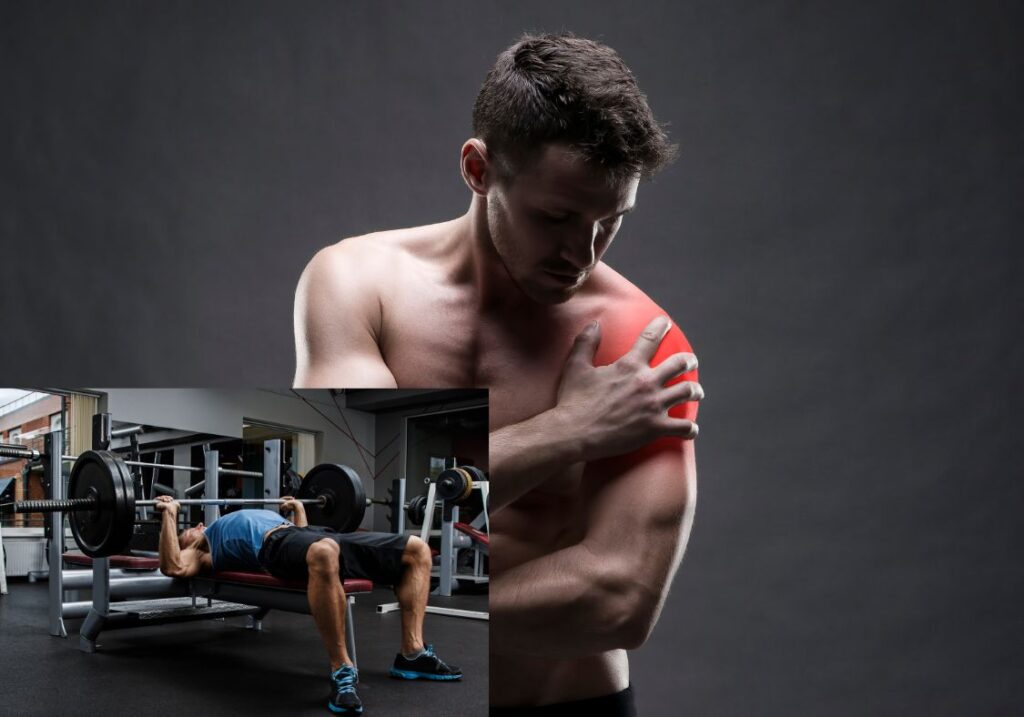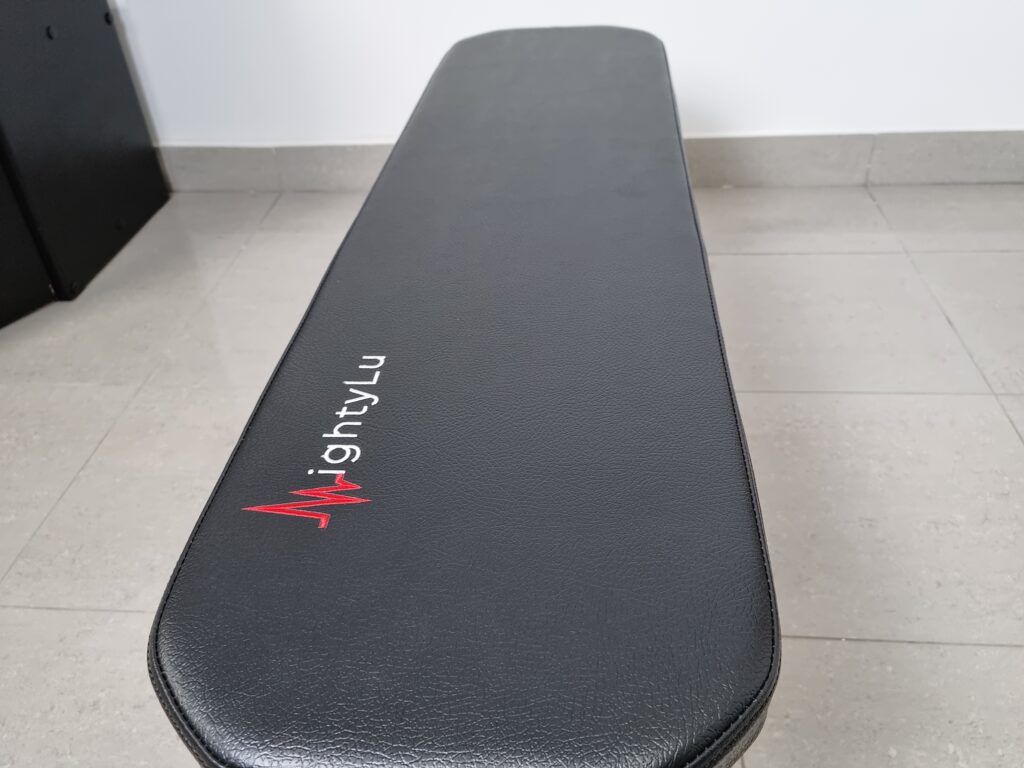
A weight bench and a set of dumbbells in your home gym can bring you impressive chest strength and muscle development if you know how to use them effectively. Many fitness trainers suggest that those who have reached a plateau with the classic barbell bench press switch to dumbbell chest presses for a while to break through that barrier and activate different muscles. Dumbbell chest presses introduce a new dimension to the development of your chest muscles, and when combined with different variations, it becomes a winning formula.
Difference Between Barbell Bench Press and Dumbbell Chest Press

When it comes to chest exercises, the barbell bench press is often the go-to for most lifters. However, the dumbbell chest press offers unique advantages. Unlike the barbell, dumbbells allow for a greater range of motion, engaging stabilizing muscles that often go underdeveloped with standard barbell movements. Moreover, dumbbells allow for independent movement of each arm, reducing the risk of muscular imbalances. One major concern with barbell bench pressing is shoulder injuries, which are less common with dumbbell presses due to the more natural path of movement.
With dumbbells, you might use slightly less weight compared to a barbell, but the muscle activation, especially in the pectorals, deltoids, and triceps, remains highly effective. In fact, the extra stabilization required during the movement often leads to greater overall muscle engagement.
Variations of Dumbbell Chest Press on a Weight Bench
When we talk about weight bench presses, we are primarily focusing on chest presses where the main goal is to load the pectoral muscles to stimulate growth. Below are the different variations and grips of dumbbell chest presses you can incorporate into your routine to boost muscle growth:
1. Traditional Dumbbell Chest Press
In this classic movement, you perform the same motion as with a barbell bench press, pushing the dumbbells up simultaneously from your chest with your palms facing forward. This movement primarily targets the pectorals and the triceps, while also engaging the anterior deltoids.
2. Neutral-Grip Dumbbell Chest Press
For this variation, your palms face each other as you press the dumbbells. This grip is easier on the shoulders and engages the triceps more intensely. It’s a great option if you are experiencing shoulder discomfort or looking to target your inner chest.
3. Reverse-Grip Dumbbell Chest Press
Here, your palms face towards your head as you press the dumbbells. This grip shifts the focus onto the upper chest and the triceps. It’s a less common variation but highly effective for those looking to emphasize upper chest development.
4. Alternating Dumbbell Chest Press
Instead of pressing both dumbbells simultaneously, you press one up while keeping the other at the starting position or up position. This adds an element of core stabilization and increases time under tension for each arm.
5. Single-Arm Dumbbell Chest Press
This unilateral exercise is perfect for correcting muscle imbalances. It forces your core to stabilize while you press with one arm, making it a fantastic option for functional strength.
6. Rotational Dumbbell Chest Press
In this variation, you rotate your wrists as you press the dumbbells upward, starting with a neutral grip and ending with palms facing forward. This movement enhances shoulder stability and activates more muscle fibers throughout the press.
Naturally, all these variations can also be performed on an incline weight bench. If you have a foldable flat bench, check out our blog on how to transform it into an incline bench for added versatility.
Shoulder Health and the Weight Bench

It’s well-known that many men develop shoulder injuries from frequent barbell bench pressing. One of the most common injuries is the SLAP tear, often caused by locking the shoulders in a fixed position during the press. To avoid this, it’s recommended to take a 2 to 3-month break from traditional bench pressing occasionally. This rest period is ideal for integrating rotational isolation exercises that protect and maintain shoulder health.
Choosing the Right Weight Bench for Shoulder Protection
Besides proper technique and adequate rest, the equipment you use plays a vital role in protecting your shoulders during chest presses. It is crucial to choose a weight bench with adequate padding and support. A bench with a wider pad (at least 27cm) provides better support for your scapulae, reducing strain on the shoulders. Our MightyRock weight bench offers a 29cm wide pad, delivering optimal support for heavy chest presses.

How Often Should You Perform Chest Presses?
The frequency of dumbbell chest presses depends on your training goals and recovery ability. For strength and hypertrophy, 2-3 times a week is generally optimal, allowing for muscle recovery and growth.
Conclusion
Incorporating a weight bench and a set of dumbbells into your workout routine can transform your chest development and overall strength. By exploring different variations of the dumbbell chest press, you not only break through plateaus but also enhance shoulder stability and reduce the risk of injury. Choose a quality weight bench that supports your shoulders and experiment with various grips and angles to unlock the full potential of your chest workouts.
